If you're using FunnelFlux as an affiliate marketer, undoubtedly you'll be adding quite a lot of affiliate networks.
In FunnelFlux these "offer sources" have a few important purposes:
- Providing a category/grouping for your offers
- Most importantly, templating of data passing in URLs
- Templating of the postback tracking used
We have a lot of existing templates to streamline things and will add new ones when requested.
Adding an offer source from a template
Go to Assets > Offer Sources and click create new.
From here you can browse our templates, which have default data passing and token setup, e.g.


With third-party networks the most critical thing is that you are passing our ID for tracking, the hit ID with token {hit}, through an appropriate URL parameter that the offer source uses.
In the example above we are passing clickid --> {hit}
Then in the conversion tracking section, we use the offer source's tokens that refer to this clickid field internally on their side, as well as their tokens for revenue and transaction ID.
In most cases you can just use our templates, but if one is not available, you will need to click create custom source.
It's important to get a good handle on URL parameters, tokens and postback tracking to work with networks -- you can see our later guide in this section on how URL tracking works.
Adding offers when using an offer source
When you later add offers to FunnelFlux you will be able to select the offer source.
Now, because it has URL data templating, it's important to consider the way the base URL and data passing sections interact.
Take an example where your offer source has data passing like this:
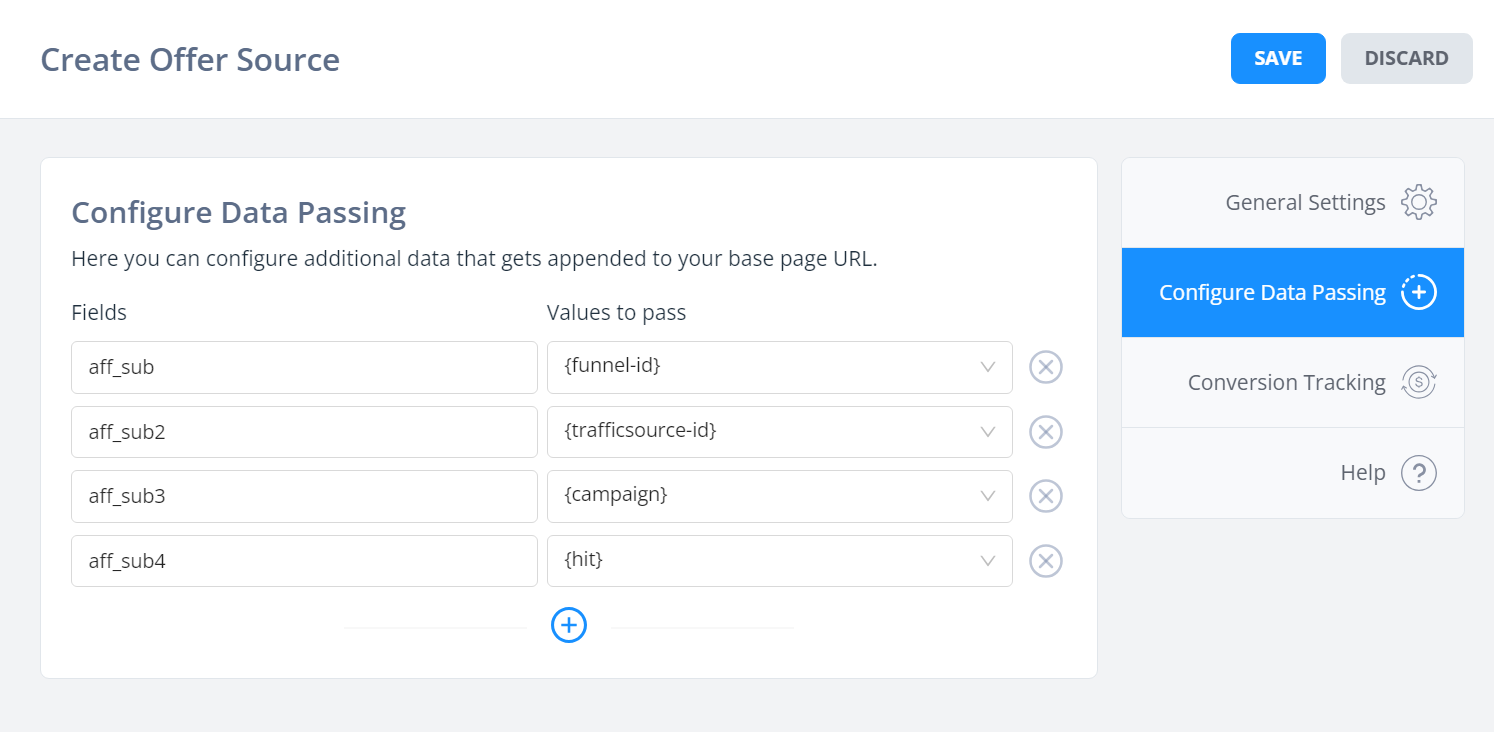
Now later you add an offer and pick that source, and use a URL like this:
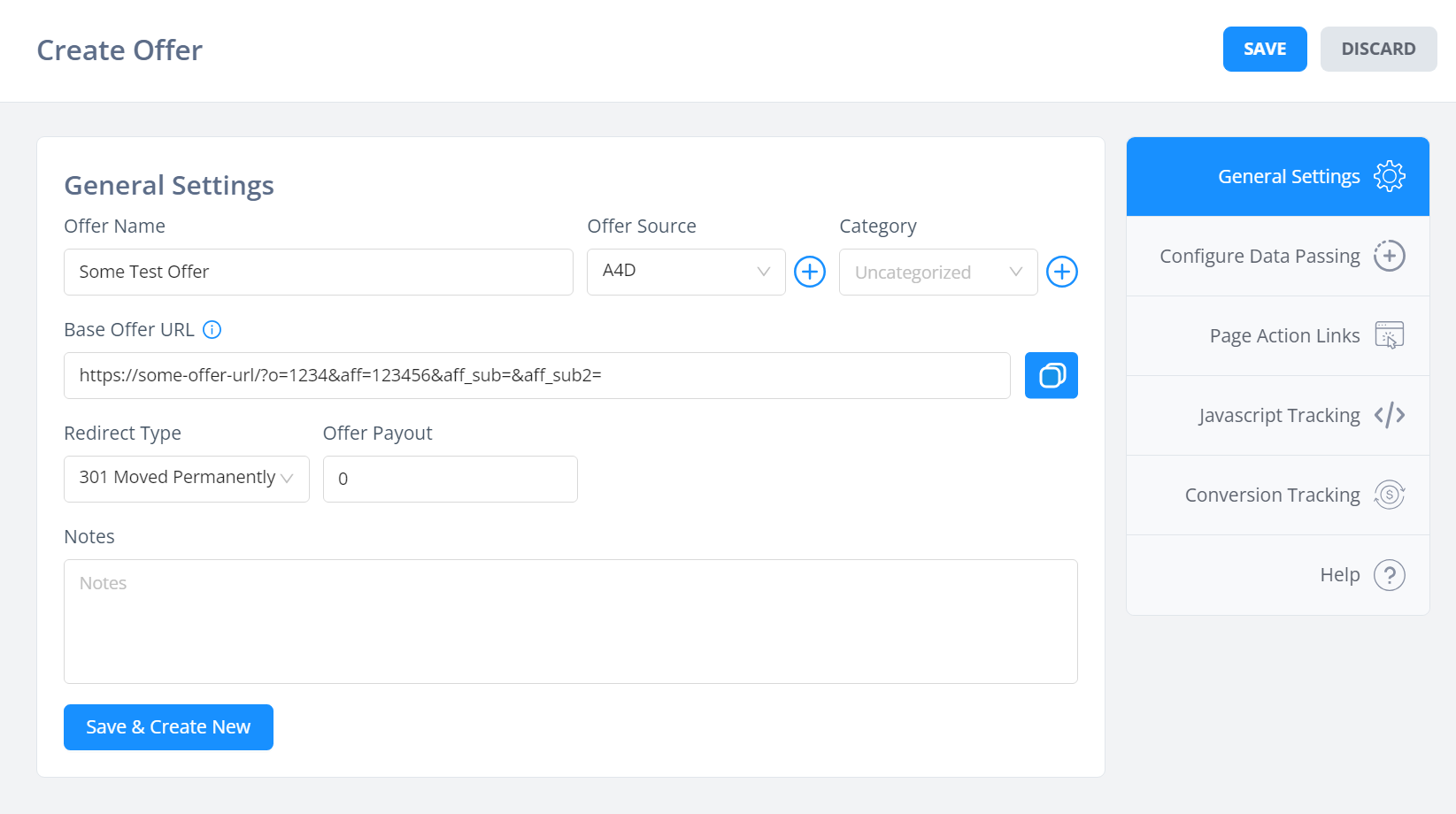
Here we have a conflict, because aff_sub and aff_sub2 are present in the base URL, but are also being added via the offer source templating.
This is apparent if you go to the data passing tab, where you can see them twice in the final URL:
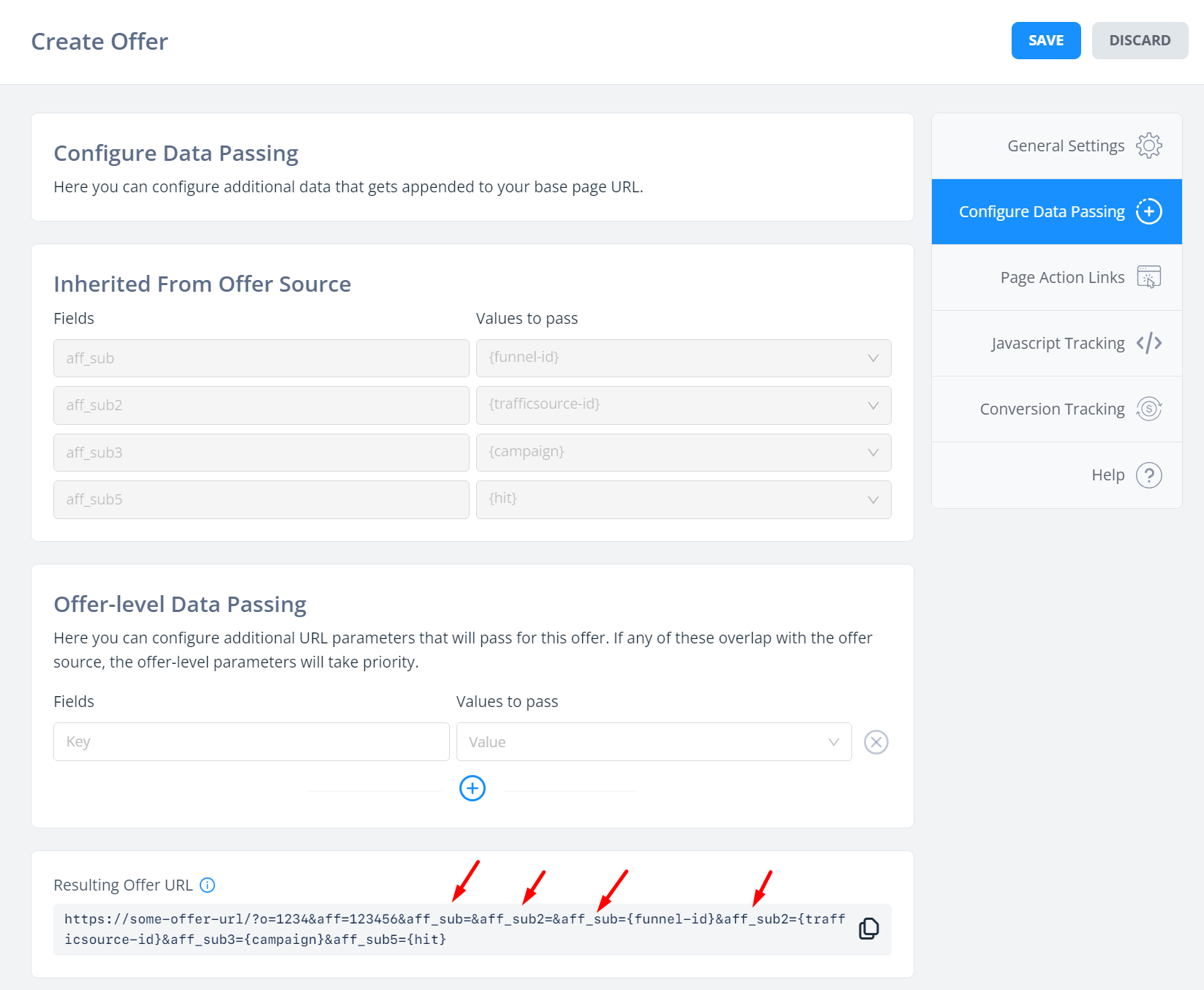
This could lead to the wrong data being passed. Normally our system would block you from saving the offer due to this conflict.
To fix, remove those parameters from your base URL. If you want to override some of these parameters at the offer level, use the offer-level data passing section above instead.
Setting up conversion tracking
For most performance affiliate marketing networks you would use a simple postback URL, as in the earlier image.
You can place this at the network, ideally as a "global" URL so that you don't need to do this manually per offer each time.
For platforms like Clickbank, Digistore24, you can now also use postback URLs (in the past they had IPN integrations, but we no longer need these).
If you are not using an affiliate network, you can try to capture our hit IDs yourself then send them back later with whatever system you are using (may need developer help for that).
Alternatively, you can just use our Javascript tracking for conversions and custom events.
You can find this under Settings > Tracking Codes.
A simple approach would be adding the universal conversion code to a thank you page and having that trigger a conversion. You can do this on Shopify, for example.
You can also use JS to fire custom events along the way as users move through your funnel (though triggering these through actions in the funnel builder may be easier).
Adding a custom offer source
If you have an offer source not covered by our templates, you'll need to figure out the data passing config yourself.
In most cases this is a matter of:
- Using the platform's link builder to understand the URL parameters they use
- Checking their UI/documentation on this, particularly to confirm if there is a specifc field for unique click IDs
- Checking their postback/conversion tracking section for setting postback URLs, but also finding the tokens they use
- Likewise, documentation for the tokens above
Once you fully understand how this tracking works, it's quite easy to set up.
For example, take this affiliate network where I am generating an offer URL:
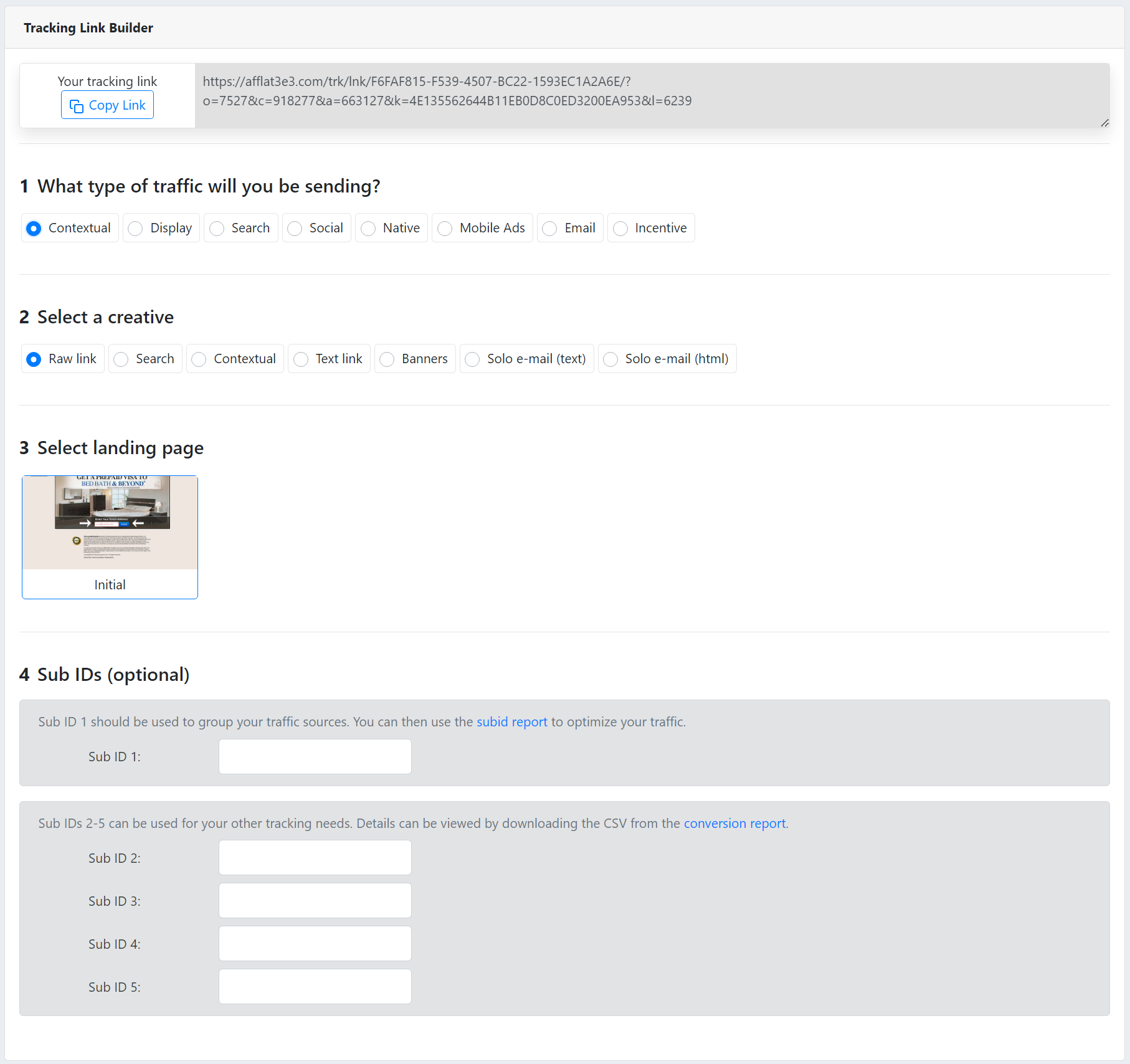 Here they have fields for adding "Sub IDs", a common name for extra URL parameters.
Here they have fields for adding "Sub IDs", a common name for extra URL parameters.
To test, I just added TEST to these fields and see how it updates the tracking link. It gave me this:
https://afflat3e1.com/trk/lnk/F6FAF815-F539-4507-BC22-1593EC1A2A6E/?o=7527&c=918277&a=663127&k=4E135562644B11EB0D8C0ED3200EA953&l=6239&s1=TEST&s2=TEST&s3=TEST&s4=TEST&s5=TEST
From this I now know that s1, s2, s3, s4 and s5 are the URL parameter names used for these parameters.
In FunnelFlux I can now set up data passing using these, like so:
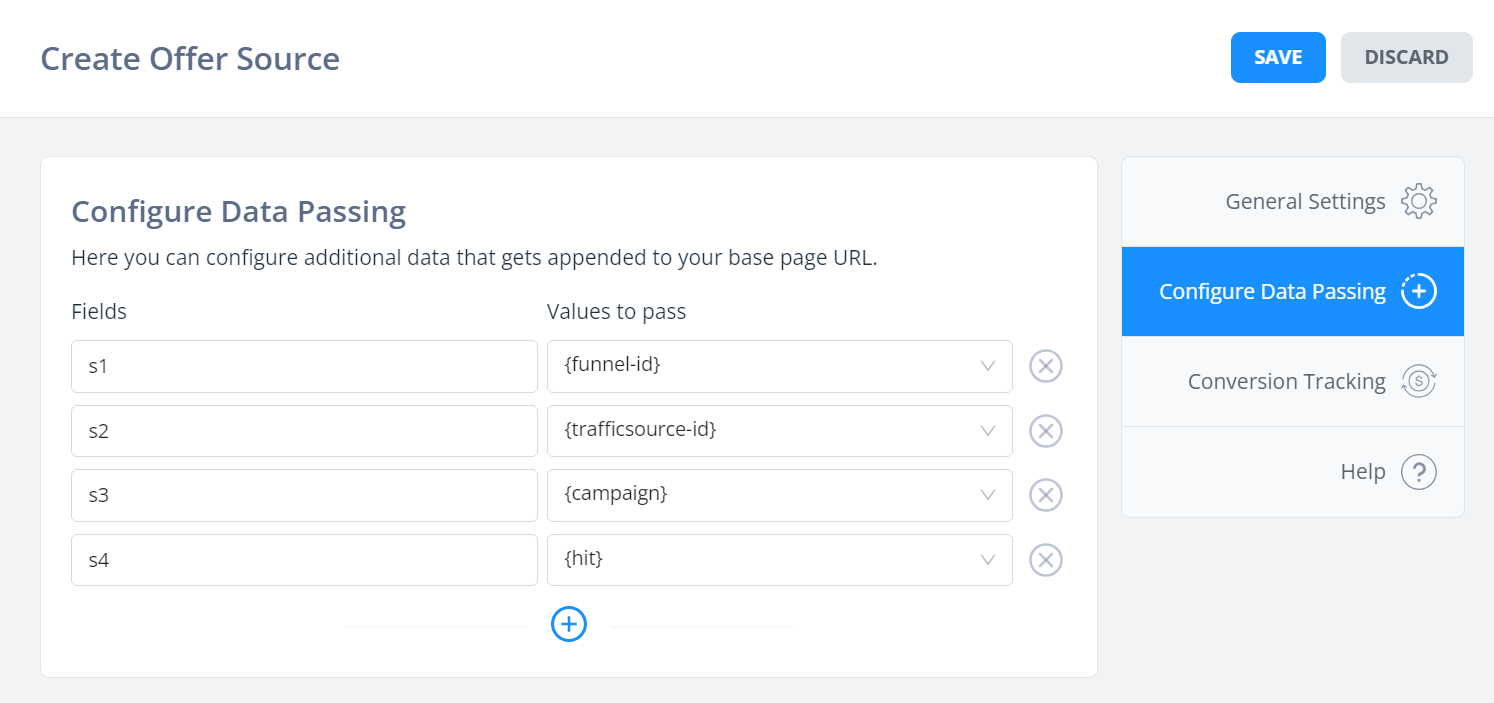
Now, I know I am passing our unique tracking ID {hit} under s4. I now need to build a postback URL that passes back the value stored under s4. The token is more likely than not going the s4 wrapped in something like {{s4}}, #s4#, %s4% etc.
Scrolling down I see this section:

Clicking see available macros I get:
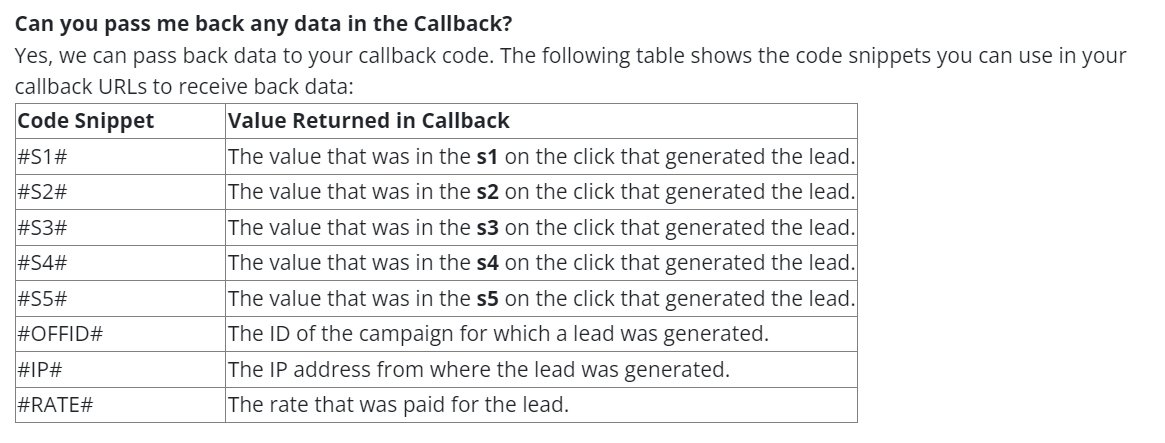
From this I know the token for s4 is #S4#, and that I can use #RATE# for the revenue amount. I don't need a value for transaction ID.
Now in the conversion tracking section of the offer source I can put these in the appropriate boxes, now getting the appropriate postback URL to use:
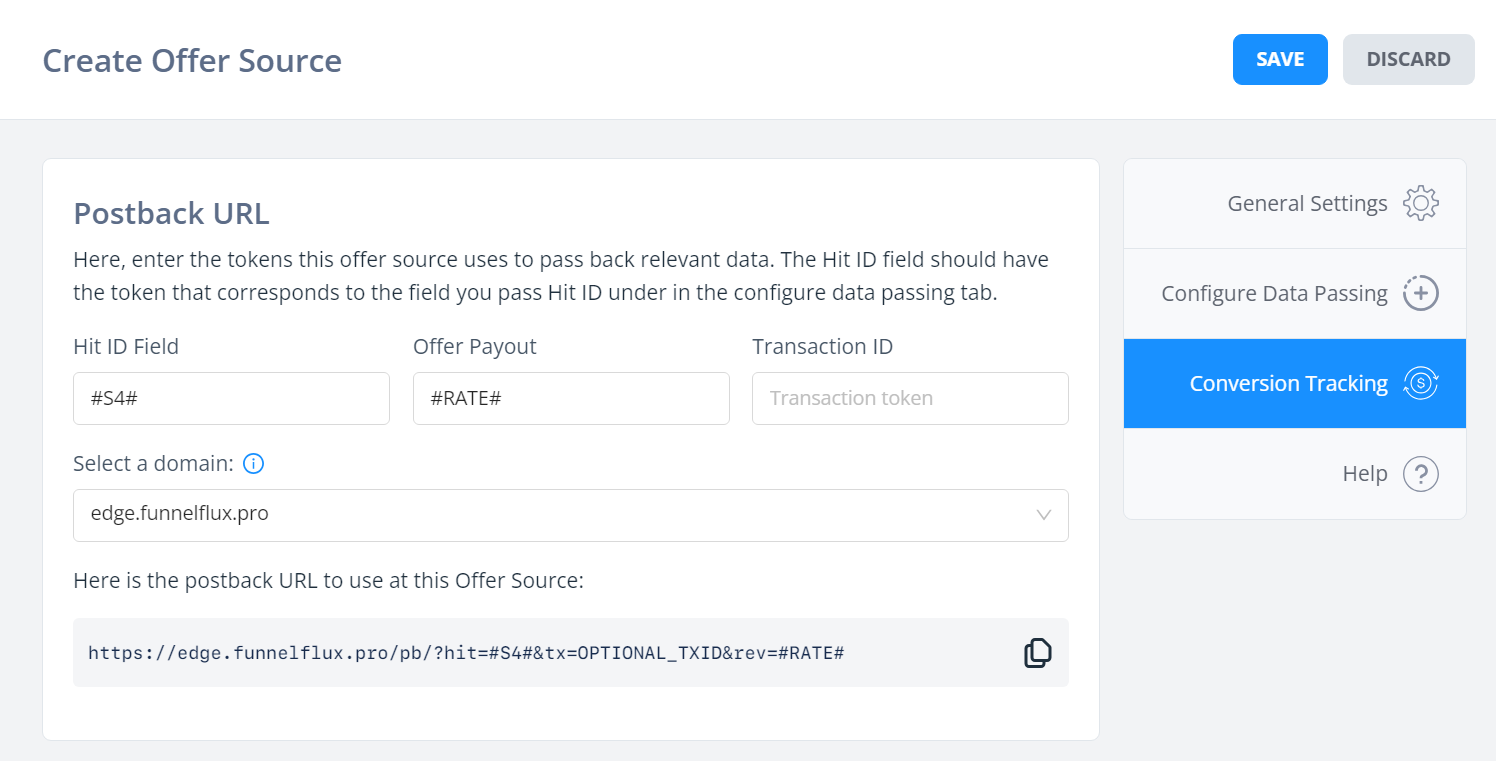
It's quite common for users to ask how to add a network when it's not in templates.
You can add anything you want, it's just a matter of having a core understanding of how data passing works. Once you understand that, it's generally easy to add any network/source.
Working with search arbitrage platforms
We have guides on using Tonic, System1, Sedo and Ads.com here.
In general, data passing with these systems can be quite complex.
Our one additional piece of guidance here is to use our disable postbacks feature.
In your initial postbacks for the conversion events, send estimated revenue. This will usually be in near real-time.
Then, you can send updates to revenue later with their delayed (but more accurate) event options. For those, add ...&disable_postbacks=true to the postback URL to prevent updates being sent to the traffic source.
Otherwise, you could get over-reporting to the source.


